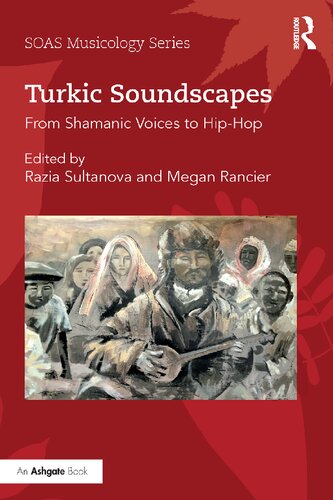

Most ebook files are in PDF format, so you can easily read them using various software such as Foxit Reader or directly on the Google Chrome browser.
Some ebook files are released by publishers in other formats such as .awz, .mobi, .epub, .fb2, etc. You may need to install specific software to read these formats on mobile/PC, such as Calibre.
Please read the tutorial at this link. https://ebooknice.com/page/post?id=faq
We offer FREE conversion to the popular formats you request; however, this may take some time. Therefore, right after payment, please email us, and we will try to provide the service as quickly as possible.
For some exceptional file formats or broken links (if any), please refrain from opening any disputes. Instead, email us first, and we will try to assist within a maximum of 6 hours.
EbookNice Team

Status:
Available4.7
29 reviewsThe Turkic soundscape is both geographically huge and culturally diverse (twenty-eight countries, republics and districts extending from Eastern Europe through the Caucasus and throughout Central Asia). Although the Turkic peoples of the world can trace their linguistic and genetic ancestries to common sources, their extensive geographical dispersion and widely varying historical and political experiences have generated a range of different expressive music forms. In addition, the break-up of the Soviet Union and increasing globalization have resulted in the emergence of new viewpoints on classical and folk traditions, Turkic versions of globalized popular culture, and re-workings of folk and religious practices to fit new social needs. In line with the opening up of many Turkic regions in the post-Soviet era, awareness of scholarship from these regions has also increased. Consisting of twelve individual contributions that reflect the geographical breadth of the area under study, the collection addresses animist and Islamic religious songs; the historical development of Turkic musical instruments; ethnography and analysis of classical court music traditions; cross-cultural influences throughout the Turkic world; music and mass media; and popular music in traditional contexts. The result is a well-balanced survey of music in the Turkic-speaking world, representing folk, popular and classical traditions equally, as well as discussing how these traditions have changed in response to growing modernity and cosmopolitanism in Europe and Central Asia.